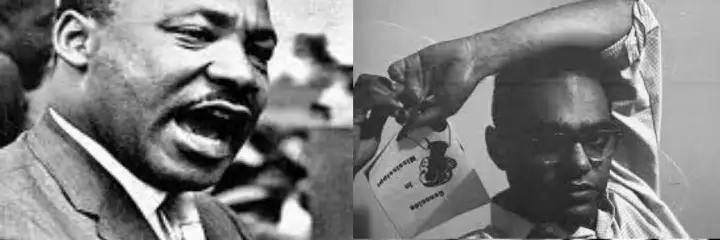The civil rights movement of the 1950s and 1960s was a pivotal moment in American history, as it attempted to bring about significant changes in the way African Americans were treated and perceived. So far, the present has yet to make that an American norm. One of the most prominent leaders of this movement was Dr. Martin Luther King Jr., whose vision for a just and equal society was rooted in the power of numbers.
One of the most striking numbers of the civil rights movement is the number of people who participated in the various protests and demonstrations. During the Montgomery Bus Boycott of 1955 and 1956, for example, it is estimated that around 42,000 African Americans refused to ride the buses, a figure that represents over 70% of the city’s African American population (40,000 divided by .70 = 60,000 Black residents). This boycott was a major victory for the movement, as it led to the U.S. Supreme Court ruling that segregation on public buses was unconstitutional.
Another important number is the number of people who were arrested for participating in civil rights demonstrations. During the Freedom Rides of 1961, for example, over 400 people were arrested for their participation; in another where King was included, over 2,500 were arrested; and John Lewis alone was arrested 40 times. Despite the arrests, however, the Freedom Rides were successful in bringing attention to the issue of segregation on interstate buses and helped to lead to the desegregation of these buses.

MLK and Bob Moses of the Algebra Project
The number of deaths related to the civil rights movement is also significant. Between 1955 and 1968, it is estimated that at least 38 people were killed in racial violence, including the deaths of Dr. King, James Earl Chaney, Jimmie Lee Jackson, George Winston Lee, Emmett Louis Till, and Medgar Evers. These deaths were a tragic reminder of the cost of fighting for civil rights; white hatred and lies, and they served to terrorize the movement and scare people away from the struggle.
The numbers of the civil rights movement also demonstrate some progress that was made during this time. Before the Civil Rights Act of 1964, for example, only 7% of African Americans in the South were registered to vote. After the Act was passed, this number rose to nearly 60%. This is a powerful example of the impact that legislation can have in promoting equality and justice.
In addition to these figures, it’s important to note the role of Robert Moses, the founder of the Algebra Project, and his mission to improve education for African American students. Through the Algebra Project, Moses aimed to bridge the gap in math education and provide equal opportunities for Black students to succeed in the field, an inspiration for the work we do at BlackMathGenius.com. His work was recognized as an important aspect of the Civil Rights movement, as it provided a means for marginalized communities to gain access to better education and upward mobility.
In conclusion, the numbers of the civil rights movement are a reminder of the sacrifices and struggles of those who fought for equality and justice. They also demonstrate the power of numbers to bring about change and the progress that was made during this pivotal time in American history. The legacy of Dr. Martin Luther King Jr. and his vision for an equal society, as well as the work of Robert Moses and the Algebra Project, still serve as a guiding light for the continuing fight for civil rights today.



0 Comments